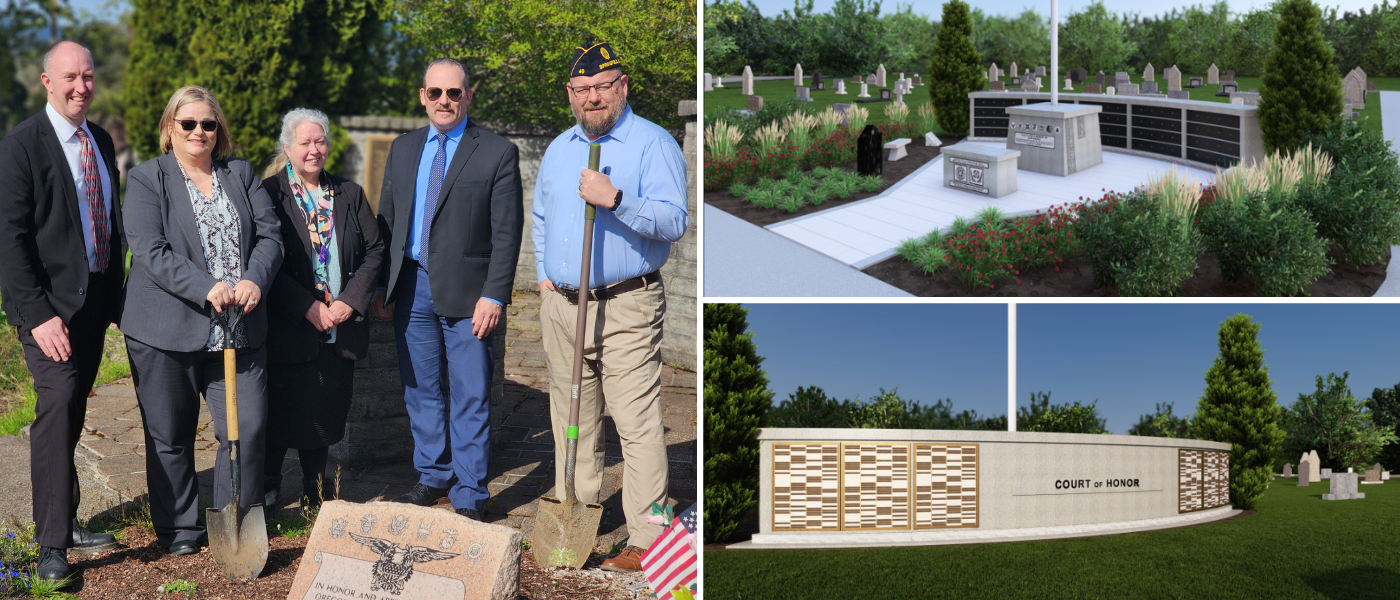So Many Tools to Trick Out Your Tombstone
Cremation rates may be rising rapidly, but that doesn’t mean traditional burial plots will be obsolete anytime soon. In 2018, cartographer Joshua Stevens created a map showing that the United States was populated with nearly 145,000 cemeteries; since then, many cemeteries have opened, expanded, or are working on innovative plans for making more options available in states that are running low on burial space.
Existing cemeteries are still and will remain sacred places for families to permanently memorialize their loved ones. With this promise in mind, several companies have created unique products and services to simplify and accentuate families’ abilities to pay respects at a loved ones’ final resting place.
A place for keepsakes
Flowers are the most traditional addition to a gravestone or burial plot, but friends and family members actually leave an incredible variety of mementos and keepsakes at the site of their loved ones’ resting places — and every item has a personal significance, either to the deceased or the visitor.
For practical, maintenance-related reasons, managed cemeteries often post strict guidelines about what can be left at a grave site and for how long. Even so, not everyone follows the rules, and removing items left at a gravesite can lead to irate families and negative press. Cemeterians also struggle with uncontrollable natural elements like wind, weather, and wildlife that destroy or disperse these keepsakes.
Regan Espinosa recognized the need for a compromise — a way that families could safely place keepsakes at a gravesite without violating the cemetery’s rule. The answer was the Visit Box, an innovative solution Espinosa introduced at the 2021 NFDA International Convention & Expo in Nashville.
Espinosa describes the Visit Box as a “box that would not only complement traditional headstones and memorial gardens, but would solve the common problems associated with natural weather conditions, wildlife hazards, and general aesthetics in keeping cemetery grounds looking cleaner.”
The patent-protected Visit Box is hand-crafted from granite, measures approximately 10” x 5”, and weighs roughly 10lbs. The base can be buried in the ground near the gravestone so visitors can easily remove the lid to deposit or access the keepsakes inside while leaving a smooth and unobtrusive surface that won’t interfere with cemetery maintenance.
To learn more about the Visit Box, check out www.thevisitbox.com.
Virtual visit
One reason cremations have become more popular is that today’s families are more mobile. Multiple generations of brothers, sisters, aunts, and cousins no longer live in concentrated areas as they did in the past. Today, personally visiting a loved one’s gravesite simply isn’t an option for many folks. That doesn’t mean they don’t want to keep tabs on the condition of the spot where they laid that person to rest. Plus, visualizing the gravestone often helps with the grieving process.
That’s one reason Joseph Schechter created AFTR, a camera that can be installed on a gravesite to record video and provide a two-way audio stream. The AFTR camera connects to the AFTR app, and its “unique, patent-pending technology allows users to share music and thoughts with their loved one in a simple and discreet way.”
According to AFTR’s website, Schechter was inspired to create the system to help his sister Beth access their father’s resting place from her home several states away. “Using the camera helped her immensely,” the website says, “and the two of them realized that a product like the AFTR camera has the ability to change the way that people grieve, forever.”
AFTR’s cameras are designed to work with any headstone, and use solar power to charge the battery for more than 15 days at a time. The AFTR app offers both video and two-way audio plus features for music, meditation, and memories.
To learn more about AFTR for cemeteries, visit www.aftr.live.
Tombstone tech
Due to space and cost constraints, the typical gravestone can only hold so much information about the deceased (although there have certainly been some exceptions). QR codes affixed to memorials were a great solution. Scanning the unique computer-generated code with a smartphone could lead visitors to a website or app where visitors could access biographies, stories, video, images, and memories of the deceased.
Connecting Directors first reported on QR codes back in 2011, and even back then this method of memorialization was thought to be a passing fad. QR codes in other capacities made a comeback during the pandemic, though; for example, restaurants captured the touch-free power of QR codes to replace menus. Today, dozens of companies create gravestone QR codes that connect to a wide variety of memorial sites.
Another technology option that’s growing in popularity is geo-tagged grave locations. Geotagging utilizes GPS coordinates to map the exact location of a gravesite, making finding the right spot much easier for visitors than traditional maps — and helping cemeteries avoid costly burial errors. Like QR codes, these geotags coordinate with both customer-facing apps and cemetery management software.
Cemetery management software is innovating in other ways, as well. Recently, EverArk introduced its software package, which will eventually include the opportunity to create a 3D avatar of a deceased person that will appear at the gravesite through the EverArk app.
“We actually have a patent on technology that will allow you to upload a picture and create a full 3D avatar of your loved one in our EverArk app,” Everark’s Greg Marmulak explained to Connecting Directors in March. “When you open the app at the burial place, you can see the deceased’s full 3D avatar in augmented reality, leaving you a message.”
To learn more about EverArk, visit www.everark.io.




